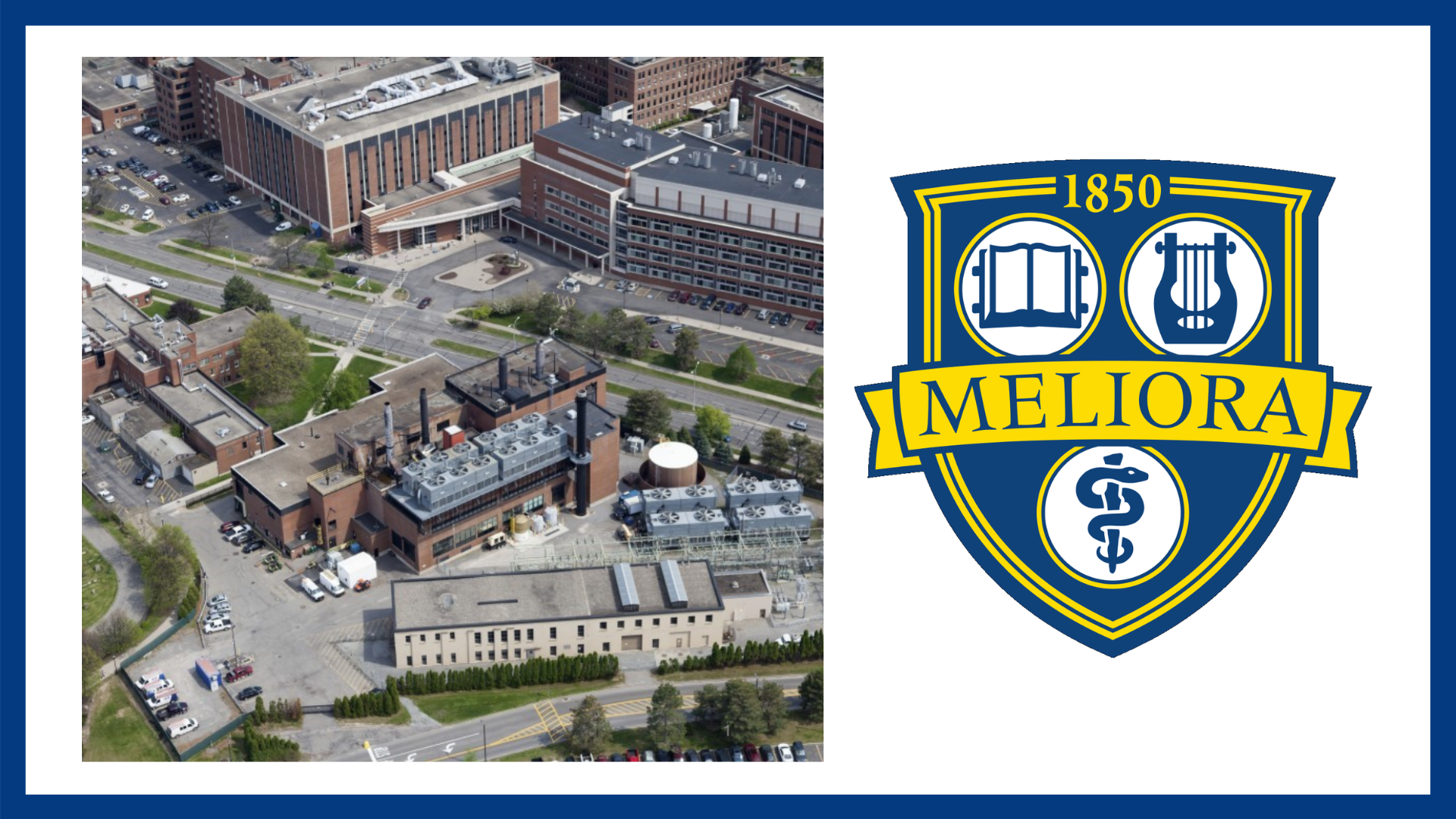Since the creation of an information guide for student-led programs, there have been several student collaboration projects with Utilities and Energy Management (UEM) and faculty. Four of these projects include a solar rooftop study, a chilled water study, an analysis of Covid-19 impacts on building energy and water use, and a UEM video in collaboration with the Reserve Officers’ Training Corps (ROTC) program.
Beauclaire Mbanya Jr. ‘20 completed a solar rooftop study to analyze how much electricity could be generated by the University and the potential environmental benefits. He first calculated how much electricity could be generated based on the roof space of Memorial Art Gallery, South Campus, Middle Campus, Eastman School of Music, River Campus, and Medical Center. Using this data, Mbanya estimated the total cost of installing the system and how much greenhouse gas (GHG) emissions could be reduced when the solar-generated electricity replaces purchased electricity. Mbanya concluded that if solar roof capacity were fully used, it would meet 8.2% of the University’s electricity consumption and reduce GHG emissions by 15%.
Data Science students Stephen Schneider ’22, Jacob Vigran ‘21, Justin Cavanaugh ‘21, and Thayalan Kundralan ‘21 collaborated with graduate students Wade Bennett MS ‘21 and Jen Rowe MS ‘21, to study the University’s chilled water system. UEM manages the Central Utilities Cogeneration Plant (Cogen) which simultaneously generates both electricity and usable heat. More specifically, the plant’s current cogeneration system produces electricity from steam while reclaiming the excess thermal energy from the process to heat many of the campus buildings. The objective of the project was to create a predictive model relating weather forecasts to chilled water needs. The students gathered power and flow data from sponsors and weather data for Rochester to create models to forecast maximum chilled water demand for the University’s campuses and medical buildings. The project will help UEM manage the Cogen plant in a more sustainable manner all year round.
Faraan Hamad ‘22 is heading a video project titled “Utilities and Energy Management at the University of Rochester.” The goal of the project is to create a video that highlights UEM and its sustainability efforts. The video will be narrated by students, faculty, and UEM staff to provide different perspectives of how these efforts impact the university community. One section of the video will include members of the University’s Reserve Officers’ Training Corps (ROTC) program. Undergrad Chemical Engineering majors Levi Sunday-Lefkowitz ‘22, Riley Prewett ‘24, Emily Spence ‘23, Theo Thompson ‘23, and Nhuja Maharjan’24 are working to complete the video in time for a national competition for student-made videos sponsored by the International District Energy Association (IDEA).
Brian Kimani ‘23 is collaborating with Computer Science Professors Jiebo Luo and Hanjia Lyu on an ongoing project analyzing the University campuses’ energy and water usage before, during, and after the Covid-19 pandemic. The project was awarded a data analysis grant and will be able to provide information on consumption trends that may help inform future University’s energy and water projects.
A previous Go Green article highlighted the first student-led project, a StoryMap titled “History of University of Rochester’s Greenhouse Gas Emissions.” The information guide that prompted the collaborations was created by a team of student volunteers, Faraan Hamad ‘22, Benjamin Kelley ‘23, and Beauclaire Mbanya Jr. ‘20, who worked in conjunction with UEM staff and academic faculty. The purpose of the guide is to encourage engagement in multidisciplinary projects that help improve the University campus.
These projects provide real-world experiences to students and demonstrate how their academic studies can apply directly to the functioning of the campus, using the facilities as a “Living Lab”. The UEM Academic Collaboration Guide has helped students and UEM staff members identify and implement several different projects as described here, and it will continue to do so as future improvement projects arise. Together, the University community unites to advance the campus and make it a more sustainable place.
Written by Emily Su, Class of 2022

